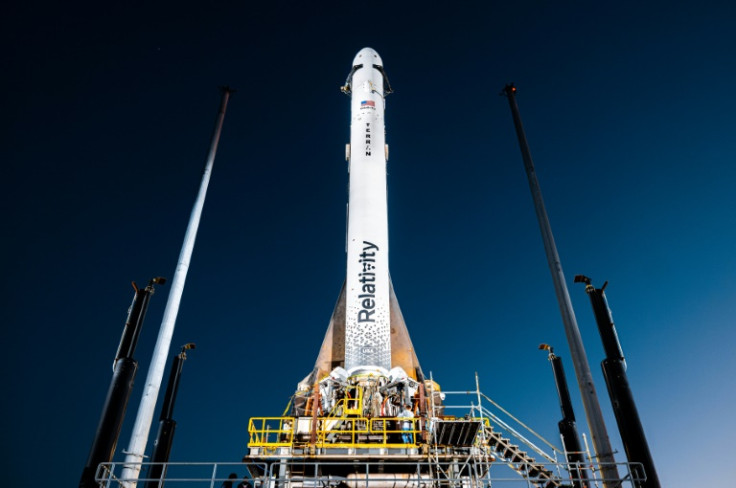Relativity's 3D-Printed Rocket Lifts Off But Fails to Reach Orbit; What Happened?
KEY POINTS
- The rocket was in the air for around three minutes after liftoff
- Its engine then sputtered and shut down
- The rocket's upper stage reportedly had an "anomaly"
Relativity Space's first 3D-printed rocket has failed to reach orbit but successfully hit some crucial milestones during its debut launch.
Calling it "the world's first 3D printed rocket," Relativity Space launched Terran 1 from Cape Canaveral Space Force Station in Florida just before 11:30 p.m. ET Wednesday.
Terran 1, which is the largest 3D-printed object ever created and to attempt orbital flight, lit up the night sky with bright colors during its maiden launch, CNN reported.
The 110-foot tall and 7.5-foot wide rocket did not reach orbit but exceeded expectations by passing the Max Q point, which is the point of maximum atmospheric pressure during an orbital launch. This is significant because it demonstrates the viability of rockets manufactured through 3D printing.
The launch performance of Terran 1 started off well as the rocket's first stage (the lowest portion of the rocket that provides the initial thrust) used up its fuel and successfully detached from the rocket's upper stage. However, the upper stage failed to reach orbit because the engine meant to propel that portion ignited only briefly.
Terran 1 was in the air for about three minutes after liftoff before its engine sputtered and shut down.
The rocket did not have enough power to reach the orbit but, nevertheless, cleared key objectives of the mission nicknamed "Good Luck, Have Fun."
Clay Walker, Relativity's launch director, confirmed that the rocket's upper stage had an "anomaly," according to CNBC.
"No one's ever attempted to launch a 3D-printed rocket into orbit and while we didn't make it all the way today, we gathered enough data to show that flying 3D-printed rockets is possible," one of the company's launch commentators said, as per CBS News.
Relativity is expected to give more updates about Terran 1's launch after further analysis.
Space companies use 3D printing or additive manufacturing to create parts for rockets nowadays. However, Relativity went all-in and has been working since 2015 to prove that rockets can be manufactured in a quicker, cheaper and more effective way through 3D printing than traditional methods.
The California-based startup also wants to prove that rockets can be made in just about two months using a much lesser number of parts.
In the case of Terran 1, 85% of the rocket was created through 3D printing.
Terran 1 is designed to carry about 1,250 kilograms to low Earth orbit but carried no payload or satellite during its maiden launch. The company said the Wednesday launch was meant to showcase a prototype vehicle.
Relativity hit several roadblocks in March and saw two failed launch attempts, the first due to propellant temperature issues and the second due to unsatisfactory fuel pressure, before the Wednesday night launch.
The data from the launch will help Relativity develop its next launch vehicle, Terran R, which will launch from Cape Canaveral starting in 2024, according to the company's website. Terran R is posed to be larger, more powerful and fully reusable.
"Terran 1 serves as a pathfinder and development platform on our path to Terran R production," Relativity Space representatives told Space.com prior to the launch. "Terran 1 has served us exceedingly well in this capacity leading up to our first launch, and we anticipate additional key learning will come from launch day as well."

© Copyright IBTimes 2025. All rights reserved.






















